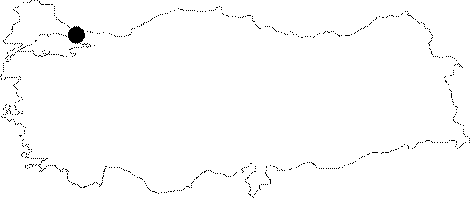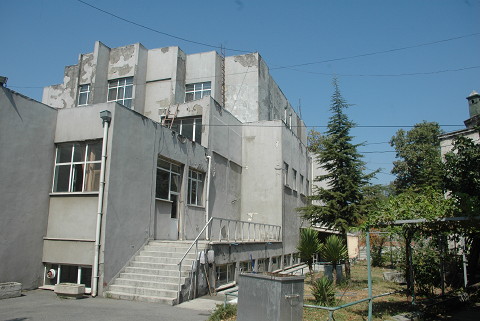| Location: The church is situated inside the boiler room of the Faculty of Sciences at the University of Istanbul in Beyazit Quarter, Eminönü District in Istanbul. It is at the intersection of Vezneciler Avenue and Resit Pasa Avenue [TAYEx 30.08.2008]. |
| Geography and Environment: The area on which the sanctuary was located was between the two important squares of the Byzantine Period, the Forum of Theodosius and the Forum of Amastrianon, 250 m far from the Mese Street. Approximately 60 m to the west stood the Balaban Aga Masjid from the Early Byzantine Period, which was removed in 1930. 160 m to the north was the Kalenderhane Mosque dating to the 12th century, and approximately 200 m to the southeast were the Beyazit Churches A, B, and C, all from the Early Byzantine Period, which were accidentally found in 1940s, and then brought down after a while. |
| Research and Excavation: Being accidentally unearthed during a constructional excavation in the campus of the Istanbul University in 1971, and called as the Church D of Beyazit by the researchers, it was studied by N. Firatli and C.L. Striker within the same year [Mathews 1976]. The environs of the building in the north direction of the building on Resit Pasa Avenue are excavated in 2008 within the scope of subway excavations. These excavations are performed under the chieftaincy of Istanbul museums of Archaeology [TAYEx 30.08.2008]. |
| Description: Building Phases: No information is available to support that the building which was erected in the late 11th century was in use during the Ottoman Period [Mathews 1976]. Architectural Features: With a domed cross in square plan, it can be concluded that it was built by bricks and ashlar blocks based on the fragments of walls unearthed during the excavation [Mathews 1976:34, pics. 6.1-6.27]. Architectural Characteristics: Only the apse and south wall remained. The traceable wall height is approximately 1 m. The south wall length is 5 m. The apse is in tact and has a semi circle shape inside. The external side of the apse is polygonal; but nothing can be stated for certain because of the partially demolished exterior and the remains of walls with different characteristics. The internal apse contains a 0.5 m high deposit as a floor. Bricks and lime mortar was used in the construction of the walls [TAYEx 08.30.2008]. |
| Finds: Pottery: The excavation conducted by Striker in 1971 yielded several potsherds [Mathews 1976]. |
| Interpretation: |
| Destruction: Based on the sources Beyazit Church D did not survive to date. This was researched within the scope of TAYEx studies. The Church is actually in the boiler room of the Faculty of Sciences at the University of Istanbul. The remains of the church is underneath the lecture halls of the faculty of sciences, but the west and north walls were demolished. The faculty's central heating system, air conditioning and boiler were placed in the center of the church. A concrete basis was built below the boiler. Since a major part of the apse exterior was demolished its shape could not be identified. The current condition of this important building is pretty bad [TAYEx 30.08.2008]. |


